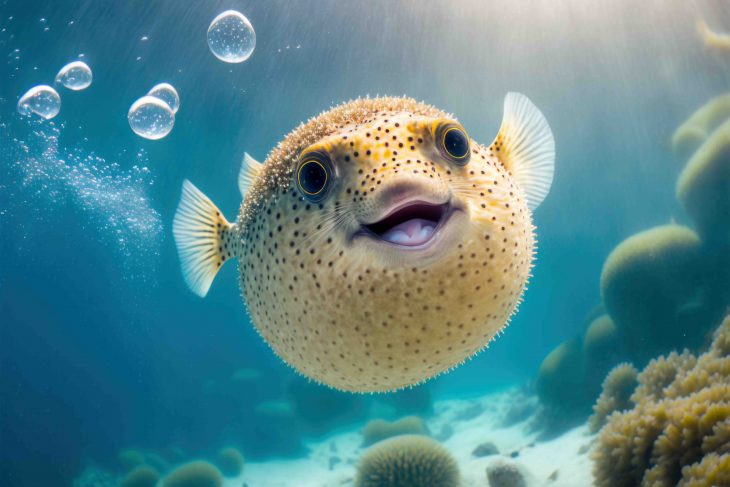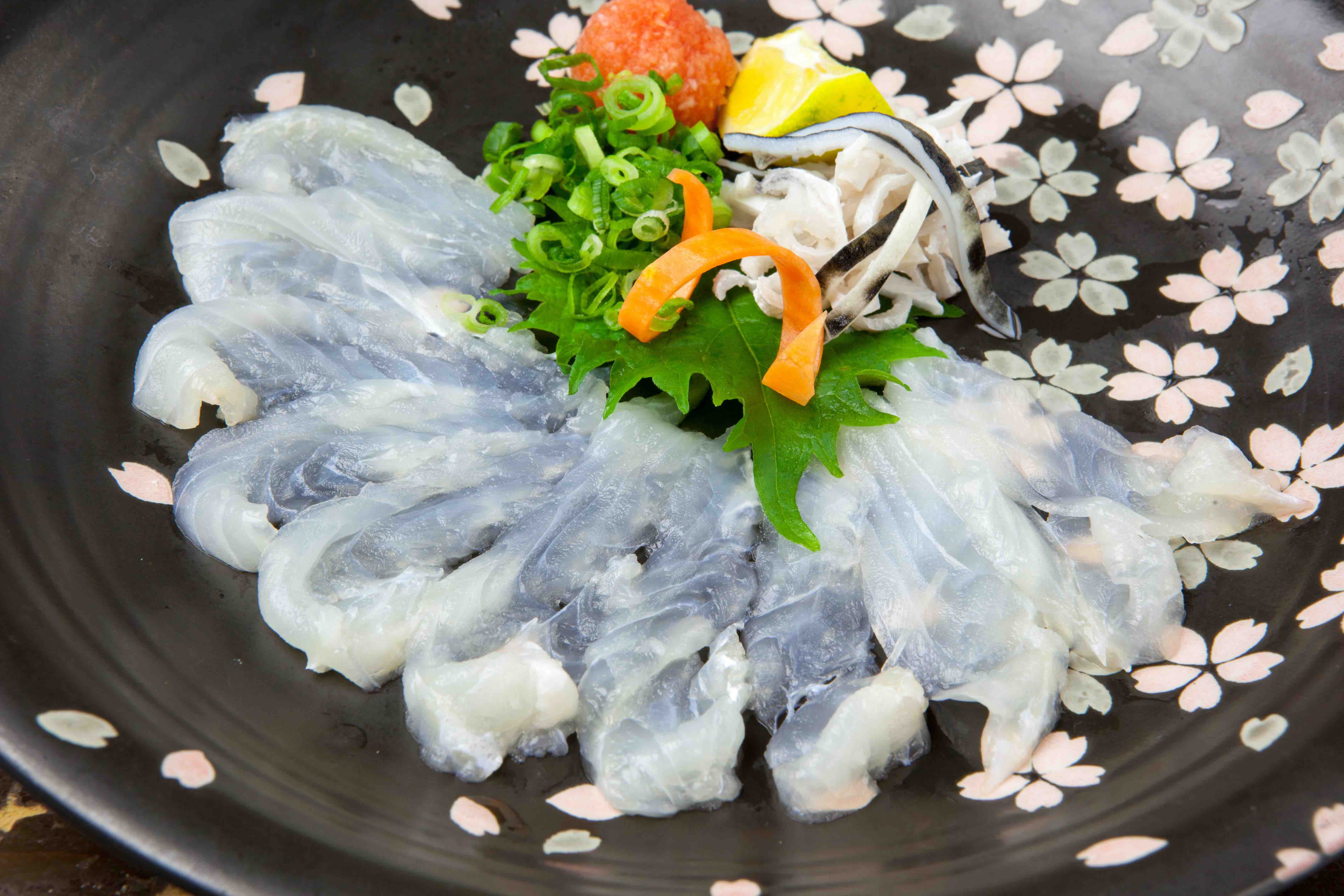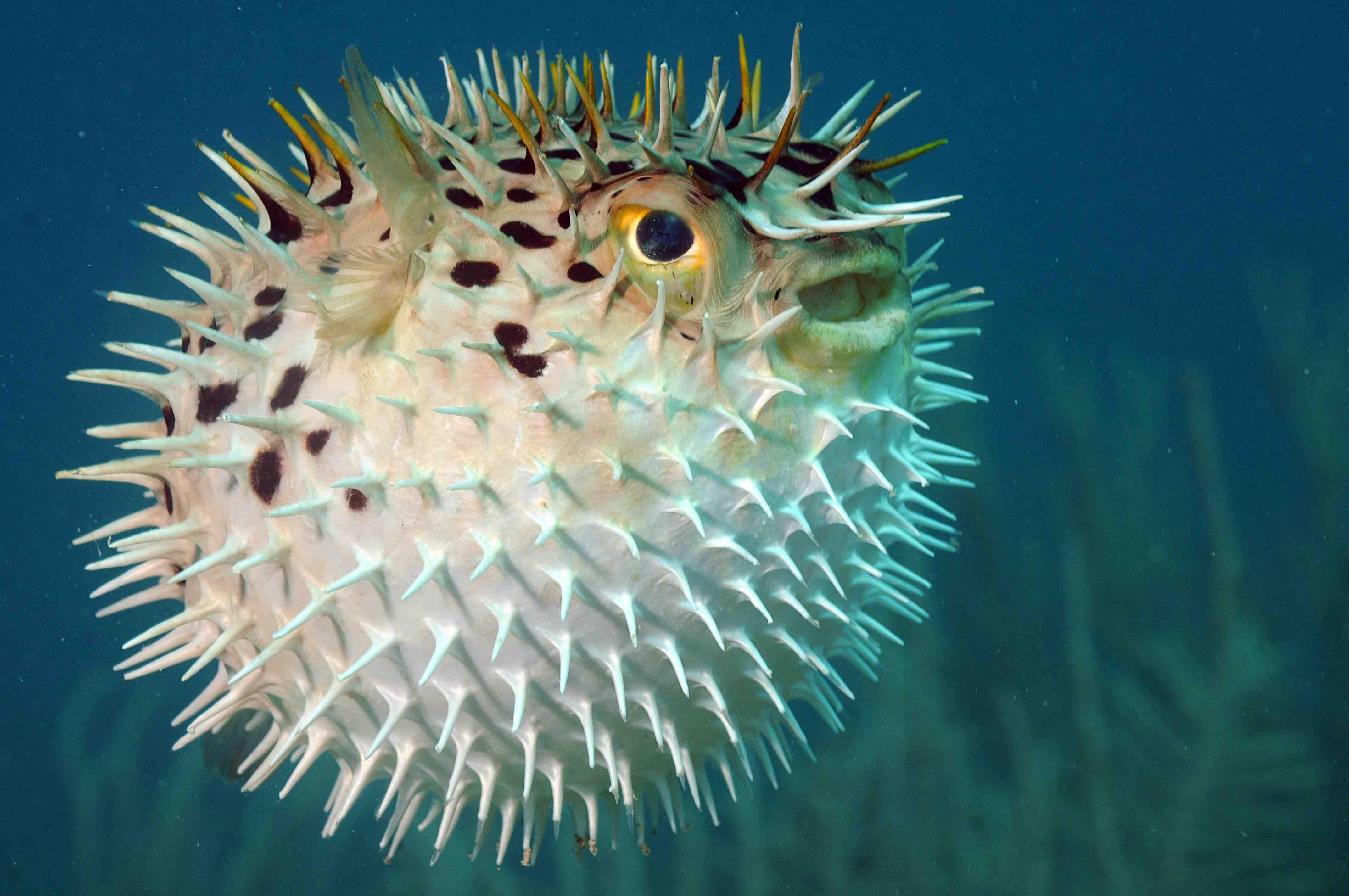
The underwater world is filled with remarkable creatures, and one that never fails to capture the imagination is the pufferfish. These intriguing marine animals have garnered attention for their ability to transform from small, docile creatures into inflated, spiky balls. Get ready to explore 18 fun facts about pufferfish, diving into their incredible adaptations, surprising behaviors, and unique characteristics.
A Variety of Names
Pufferfish belong to the family Tetraodontidae, which includes over 120 species. They are also known as blowfish, globefish, porcupinefish or balloonfish, owing to their ability to inflate their bodies when threatened.
Ingenious Defense Mechanism
When faced with danger, pufferfish gulp water into their elastic stomachs, rapidly inflating their bodies. This transformation makes them larger and rounder, deterring potential predators. The inflation is due to the expansion of the stomach and the swallowing of water, rather than air as commonly believed.
Size Matters
Pufferfish come in various sizes, ranging from a few centimeters to almost a meter in length. The largest species, the oceanic sunfish, can weigh up to a whopping 2,200 pounds (1,000 kg)!
Toxicity at Its Finest
Many species of pufferfish possess potent toxins, particularly in their organs and skin. These toxins, such as tetrodotoxin, are a defense mechanism against predators. In fact, the pufferfish’s skin and certain internal organs can contain enough poison to kill multiple adult humans.
Culinary Cautions

Despite their toxicity, certain cultures consider pufferfish a delicacy. However, consuming them requires great expertise as the toxins must be skillfully removed during preparation. Chefs who serve pufferfish, known as fugu, in Japan undergo rigorous training and certification.
Meticulous Mating Rituals
During the mating season, male pufferfish create intricate patterns on the seafloor to attract females. These elaborate “crop circles” are formed by swimming tirelessly, using their fins to carve the sand.
Nest Guardians
Once the female pufferfish selects a mate, she lays her eggs in the center of the male’s circular creation. The male diligently guards the eggs, using his fins to circulate fresh water and protect them from potential threats.
Nibbling on Coral
Pufferfish have a diet that primarily consists of invertebrates, such as crustaceans and mollusks. However, some species also enjoy nibbling on coral, using their strong beaks to scrape off the algae that grow on it.
Impressive Inflation
When a pufferfish inflates, it can become many times larger than its original size. Some species can inflate up to three times their normal size, while others can become perfectly spherical.
Unique Dentition
Pufferfish possess four teeth that are fused together, forming a beak-like structure known as a “beak plate.” This specialized dentition allows them to crush the hard exoskeletons of their prey with ease.
Slow Swimmers
Despite their small and agile appearance, pufferfish are generally slow swimmers. Their small pectoral fins and rounded bodies make them better suited for maneuvering and hovering rather than swift swimming.
An Eye on Each Side
Pufferfish have eyes that are positioned on either side of their bodies. This adaptation enables them to have a wide field of vision and effectively spot potential predators approaching from various angles.
Artistic Expression
In addition to their remarkable defense mechanisms, pufferfish have the extraordinary ability to create intricate sand sculptures on the seafloor. These beautiful patterns are formed by the male pufferfish as part of their courtship behavior.
Hydrodynamics at Play
When swimming, pufferfish use their pectoral fins to navigate through the water. These fins, located on either side of their bodies, allow for precise control and stability.
Lifespan Variations
The lifespan of pufferfish varies depending on the species and environmental factors. While some species live for only a few years, others can survive for several decades in the wild.
Globetrotters of the Sea

Pufferfish can be found in various marine habitats worldwide, including warm and temperate waters. They are commonly spotted in coral reefs, seagrass beds, estuaries, and even in some freshwater systems.
Predator Versus Prey
Despite their formidable defense mechanisms, pufferfish have natural predators. Sharks, dolphins, and larger fish are among the few creatures that can consume pufferfish without being affected by their toxins.
Conservation Concerns
Pufferfish populations face threats such as overfishing, habitat destruction, and pollution. Some species are listed as vulnerable or endangered, highlighting the need for conservation efforts to protect these fascinating creatures and their ecosystems.
Conclusion
With their mesmerizing abilities and captivating features, pufferfish offer a glimpse into the wonders of the underwater world. From their ingenious defense mechanisms to their intricate mating rituals, these fascinating creatures continue to intrigue and inspire both scientists and curious minds alike. Remember to appreciate and protect the diverse marine life that enriches our planet’s oceans.
Frequently Asked Questions (FAQs)
Are pufferfish always toxic?
No, not all pufferfish are toxic. While many species contain potent toxins, there are certain non-toxic species as well.
How can pufferfish inflate without harming themselves?
Pufferfish have highly elastic stomachs that allow them to inflate without causing harm. They possess special adaptations that prevent their organs from being compressed.
Can pufferfish deflate themselves after inflating?
Yes, pufferfish can deflate themselves by expelling the water from their stomachs. They gradually release the water, returning to their normal size and shape.
Are pufferfish good swimmers?
Pufferfish are generally slow swimmers due to their body shape and small fins. They rely more on their maneuverability and hovering abilities rather than swift swimming.
Are pufferfish intelligent creatures?
Pufferfish exhibit certain levels of intelligence, especially in their nest-building and mating behaviors. However, their overall intelligence is still a subject of scientific study.
Was this page helpful?
Our commitment to delivering trustworthy and engaging content is at the heart of what we do. Each fact on our site is contributed by real users like you, bringing a wealth of diverse insights and information. To ensure the highest standards of accuracy and reliability, our dedicated editors meticulously review each submission. This process guarantees that the facts we share are not only fascinating but also credible. Trust in our commitment to quality and authenticity as you explore and learn with us.
